Can a thing be more human than a human being? Michael E. Smith has effaced humans from his art and replaced them with a physiology and psychology of things. He prepares discarded pieces of apparel like socks, T-shirts, and hats, domestic objects like bottles and bowls, parts of technical appliances or animal cadavers, and arranges them as though to lay out a forensics of maltreated lives that persist in their material fragments.
Kann ein Ding humaner sein als ein Mensch? Michael E. Smith hat den Menschen aus seinem Werk gestrichen und durch eine Physiologie und Psychologie der Dinge ersetzt. Abgelegte Kleidungsstücke wie Socken, T-Shirts und Mützen, Haushaltsgegenstände wie Flaschen und Schüsseln, Teile von technischem Gerät oder Tierkadavern werden präpariert und angeordnet wie zu einer Forensik misshandelter Leben, die sich in ihren materiellen Bruchstücken fortsetzen.
Smith’s sculptures and pictures draw on a frugal repertoire of materials that used to satisfy basic physical needs for food, warmth, or integrity or served in technical routines of everyday life. He takes them out of use and sets them down in the empty space of his exhibitions, where they seek cover in the room or among each other. Dismissed from the social world of which they were once a part, they envelop or support one another or persist in isolation.
They often present the anatomical proportions of torsi or body limbs, or resemble a head in size. PVC foam fills their insides, resins impose rigid shapes on them, their surfaces are gummed up and scratched. They bear the traces of former uses like scabs. Smith’s objects look like physical reconstructions of emotional vulnerability and violation; his exhibitions, like an archaeology of humanity.
Smiths Skulpturen und Bilder entstehen aus einem sparsamen Fundus von Materialien, die zuvor körperliche Grundbedürfnisse nach Nahrung, Wärme und Unversehrtheit sicherten oder technischen Alltagsroutinen dienten. Er nimmt sie aus dem Gebrauch und legt sie in die Leere seiner Ausstellungen, wo sie Deckung im Raum oder bei sich selbst suchen. Aus der sozialen Welt entlassen, deren Teil sie einmal waren, umhüllen und stützen sie sich gegenseitig oder bleiben isoliert.
Oft haben sie anatomische Proportionen von Torsi und Gliedmaßen oder die Größe eines Kopfes. PVC-Schaum stopft sie aus, Harze zwingen sie in rigide Formen, ihre Oberflächen sind verklebt und zerkratzt. Sie tragen Spuren ehemaliger Verwendung wie eine Kruste. Smiths Objekte erscheinen wie physische Rekonstruktionen emotionaler Angreifbarkeit und Versehrtheit, seine Ausstellungen wie eine Archäologie der Humanität.
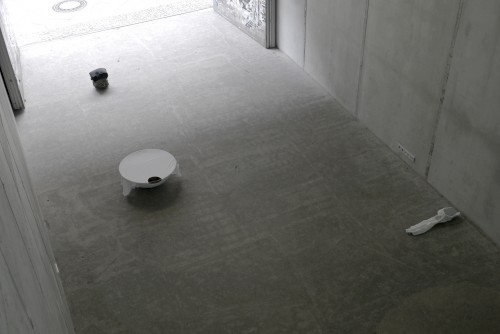
Smith’s oeuvre counters the ecological and economic disaster of our era with a materialism of basic needs
Smiths Werk hält dem ökologischen und ökonomischen Desaster der Epoche einen Materialismus der Grundbedürfnisse entgegen
For the things in and with which we live are more than mere accessories of the self. Especially when they safeguard our survival, they are our existence. At a time when Western societies overstep the limits of their growth and should urgently switch from expansion to self-preservation, Smith’s oeuvre counters the ecological and economic disaster of our era with a materialism of basic needs.
And yet his art pointedly refuses to align itself with ascetic ideals proclaiming that “less is more.” Modest lifestyles have long started to spread against the will of those who adopt them, and upward economic redistribution is teaching the middle classes the fear of social decline. For many people, “less” means a bare-bones life, and Smith’s objects trace that threshold of pain in lieu of a body politic that has become deaf to its own needs.
Text and photos: Alexander Koch
Denn die Dinge, in und mit denen wir leben, sind mehr als nur Beiwerk des Selbst. Zumal da, wo sie das Überleben sichern, sind sie unsere Existenz. Zu einem Zeitpunkt, da westliche Gesellschaften die Grenzen ihres Wachstums überschreiten und sich von Expansion auf Selbsterhalt umstellen müssten, hält Smiths Werk dem ökologischen und ökonomischen Desaster der Epoche einen Materialismus der Grundbedürfnisse entgegen.
An asketische Ideale des „Weniger ist Mehr“ lässt es sich aber gerade nicht anschließen. Denn längst verbreiten sich bescheidene Lebensweisen wider Willen, und die wirtschaftliche Umverteilung von unten nach oben trägt die Angst vor dem sozialen Abstieg in die Mittelklassen. Für Viele bedeutet „Weniger“ das Leben an einer Schmerzgrenze, die Smiths Objekte anstelle eines Gemeinwesens nachempfinden, das für seine Bedürfnisse taub geworden ist.
Text und Fotos: Alexander Koch

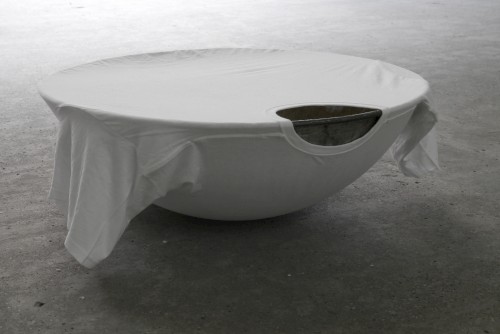


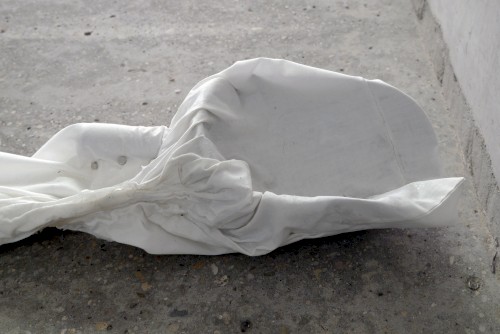
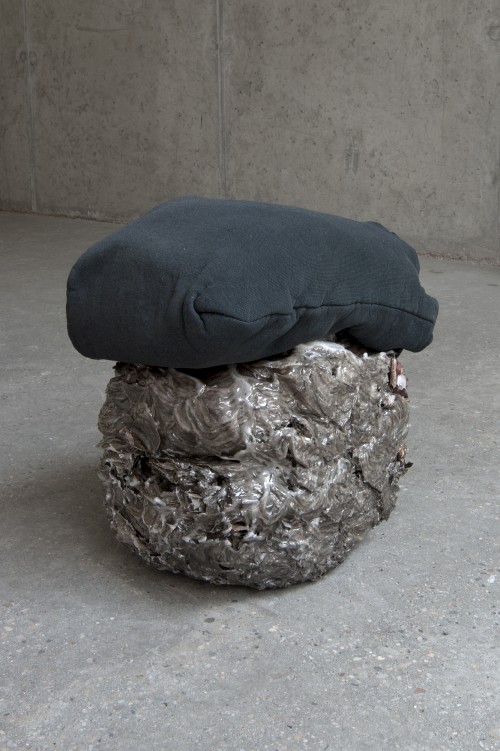

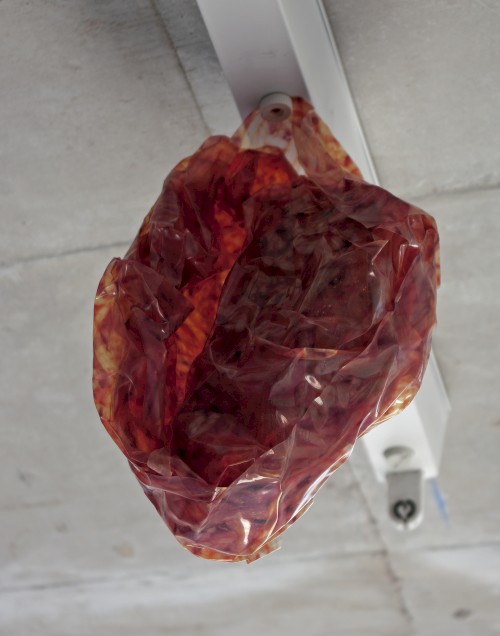
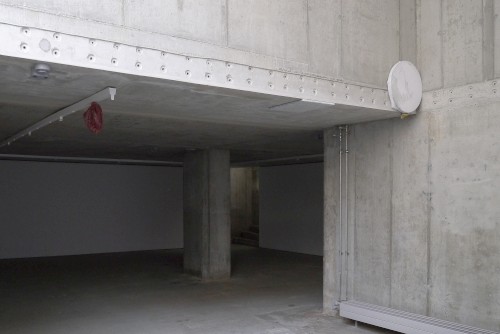

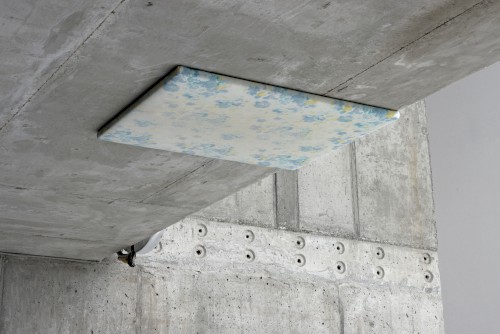
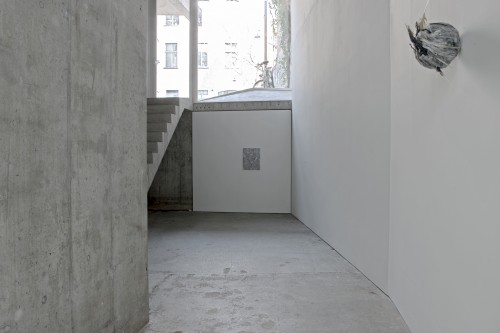


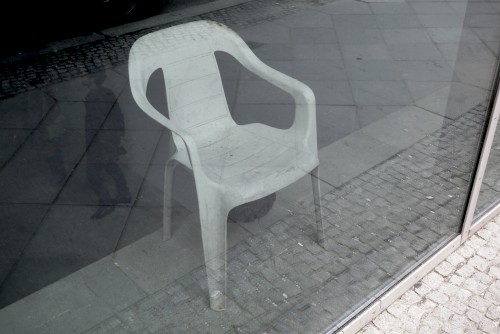
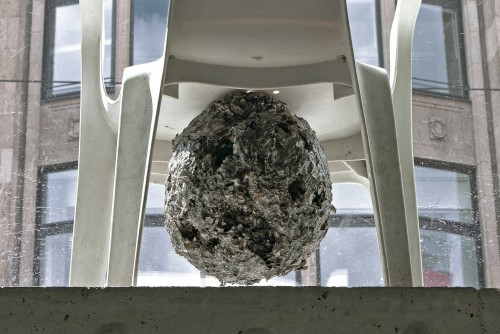
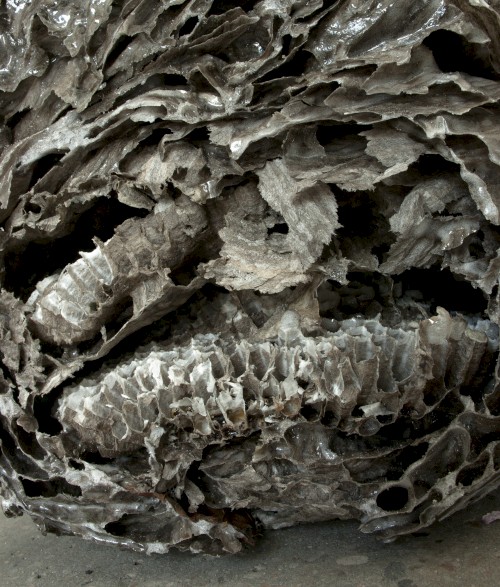
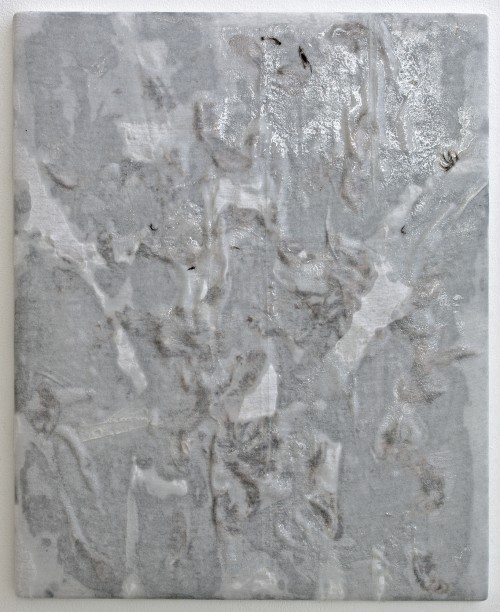
- Current
- Upcoming
- 2025
- 2024
- 2023
- 2022
- 2021
- 2020
- 2019
- 2018
- 2017
- 2016
- 2015
- 2014
- 2013
- 2012
- 2011
- 2010
- 2009